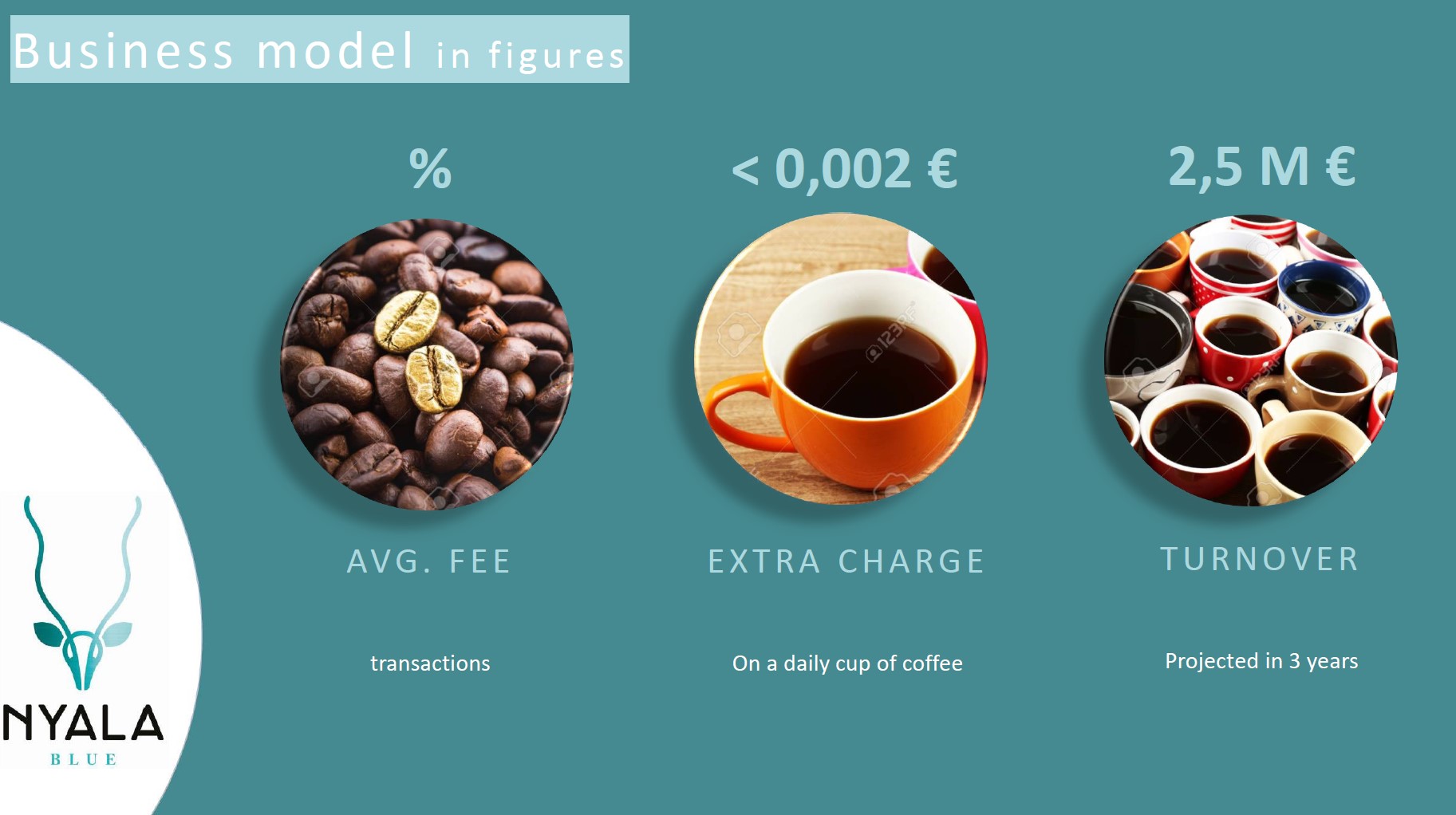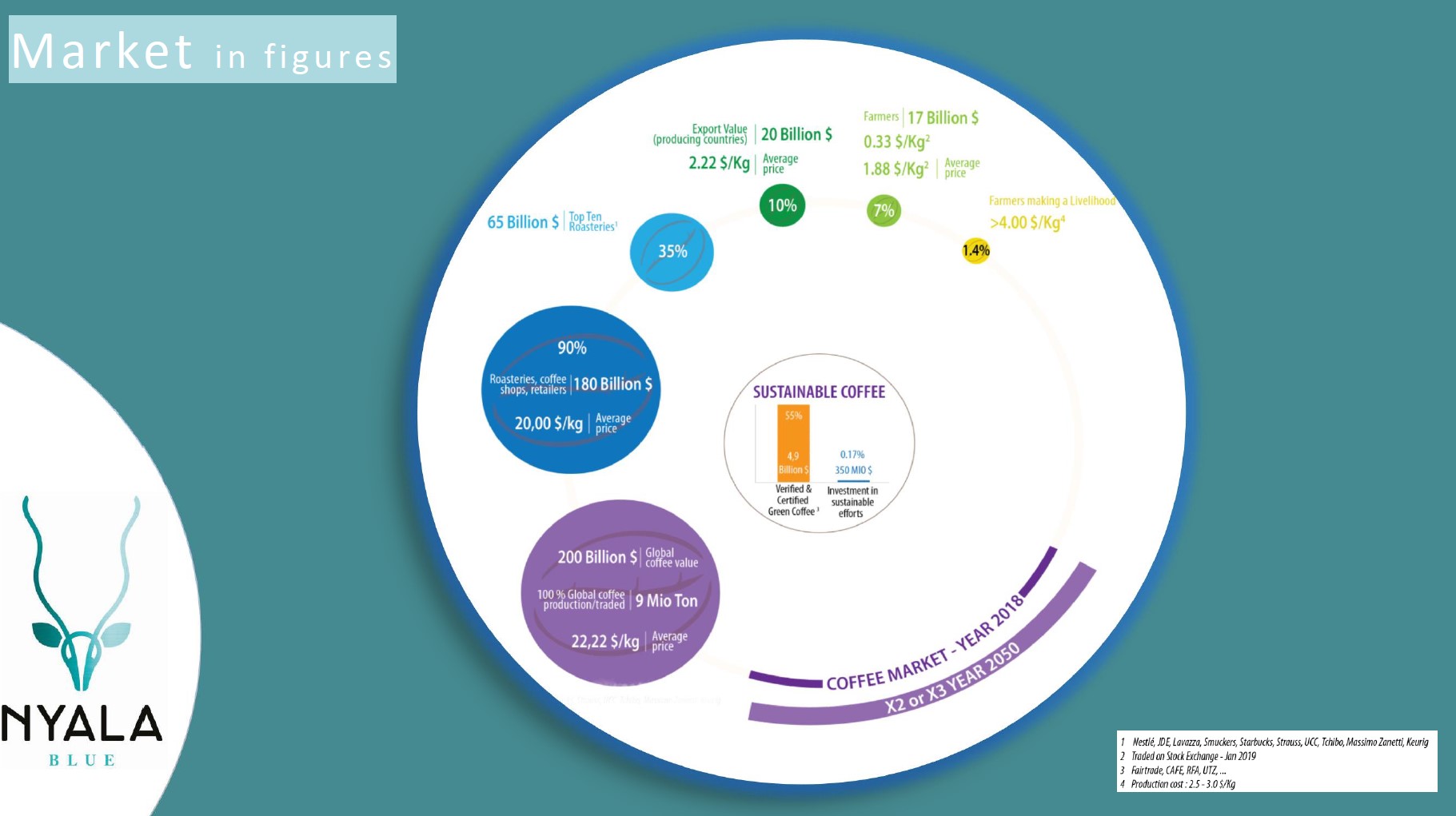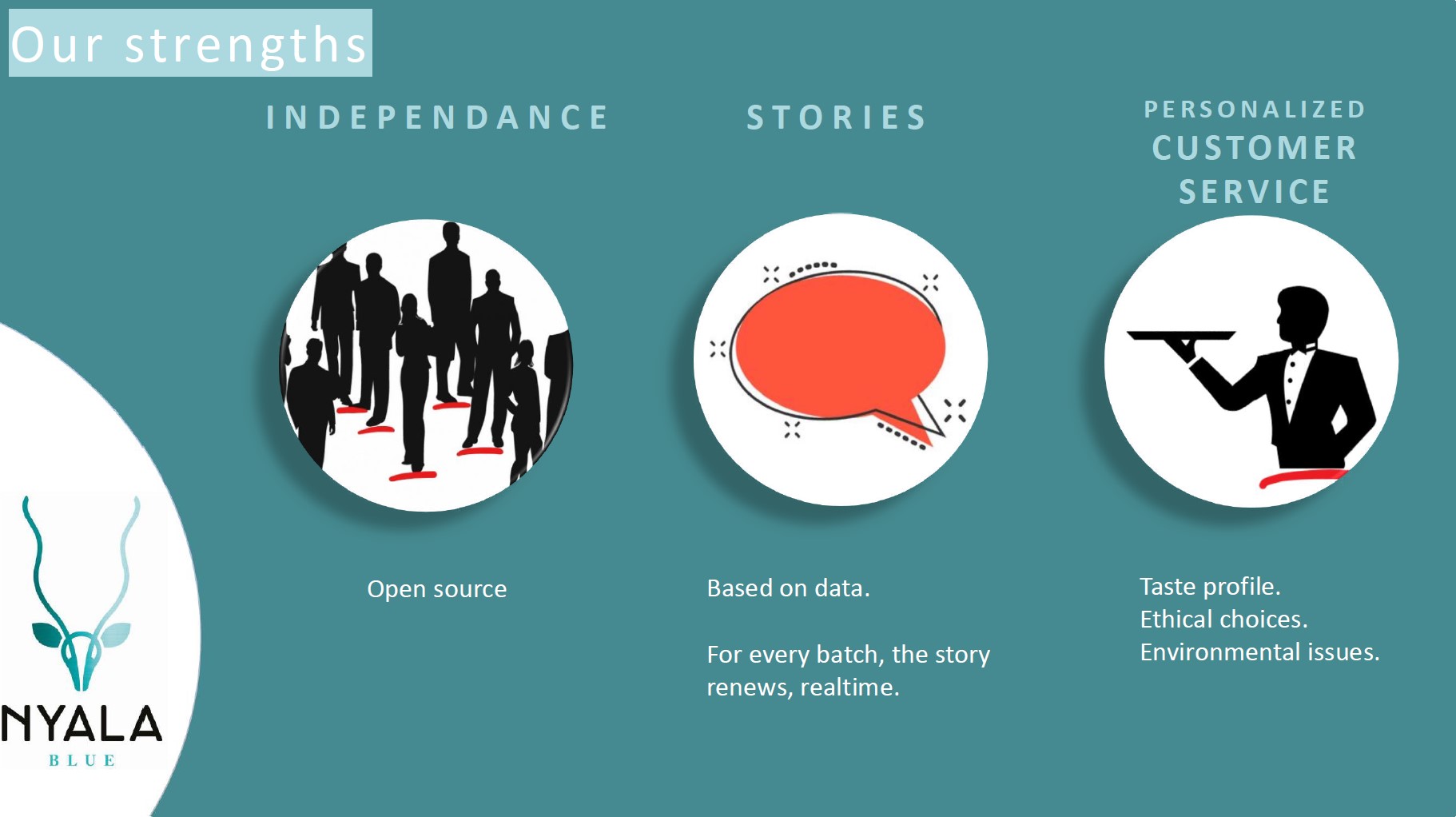Nyala Blue 1A
Tracing stories!
€51,000
total amount raised in round
102%
- Backed by over 60 investors
- Eligible for a tax reduction
Campaign Closed
BUSINESS MODEL

If the platform is brand-neutral, how does Nyala Blue earn money? The business model here relies on a fixed-fee model that supports the entire chain.
Nyala Blue charges a fixed cost per kg of coffee that is registered through the platform.
STRATEGY
Marketing strategy :
The Nyala Blue platform is a two-sided marketplace, so it requires marketing on the side of the consumer and the companies.
● Consumer:
The target group here is mainly a group of younger, often ethical consumers. We achieve this through social media campaigns, video marketing and collaborations with coffee brands.
The emphasis here is on having an app downloaded, which consumers use to investigate the origin of their coffee.
● Companies:
This, of course, depends on convincing companies in the coffee chain. Nyala Blue makes sure that they put both QR codes on their packaging and register their data on the blockchain platform.
We achieve them through:
- partnerships with existing labels, NGOs and trade unions.
- pilot projects with various actors in the coffee chain.
- B2B sales to convince companies in the chain to use the software.
Distribution strategy
● Consumers can download the app in current web stores such as the Google and Apple App Store.
● We approach companies directly to convince them to use our software,
● Partnerships with umbrella organizations.
Internationalization strategy:
Due to the international nature of the product, we internationalize automatically.
Nyala Blue charges a fixed cost per kg of coffee that is registered through the platform.
STRATEGY
Marketing strategy :
The Nyala Blue platform is a two-sided marketplace, so it requires marketing on the side of the consumer and the companies.
● Consumer:
The target group here is mainly a group of younger, often ethical consumers. We achieve this through social media campaigns, video marketing and collaborations with coffee brands.
The emphasis here is on having an app downloaded, which consumers use to investigate the origin of their coffee.
● Companies:
This, of course, depends on convincing companies in the coffee chain. Nyala Blue makes sure that they put both QR codes on their packaging and register their data on the blockchain platform.
We achieve them through:
- partnerships with existing labels, NGOs and trade unions.
- pilot projects with various actors in the coffee chain.
- B2B sales to convince companies in the chain to use the software.
Distribution strategy
● Consumers can download the app in current web stores such as the Google and Apple App Store.
● We approach companies directly to convince them to use our software,
● Partnerships with umbrella organizations.
Internationalization strategy:
Due to the international nature of the product, we internationalize automatically.
MARKET POSITIONING

MARKET
Nyala Blue focuses its product on the coffee market, a market that is large and growing.
● Today, that market has an estimated value of $ 200 billion, and analysts expect strong growth. For example, the Coffee Barometer of 2018 projects a tripling of the demand for coffee by the year 2050.
● 55% of the coffee sold is certified and/or labelled.
● Major players in that coffee industry invest on average 0.17% in sustainability initiatives. There is therefore still room for more investments in sustainability.

NYALA BLUE DISTINGUISHES ITSELF FROM THE MARKET BY :
● Storytelling:
- The Coffee drinker selects or scans, and gets a story of the beans inside the bag. A resumé. For every batch of bags, the story renews, real-time.
- Each party (transaction) how they want to tell the Coffee drinker, based on facts.
- The coffee drinker has a real story, checked with the Blockchain Technology.
● Independence :
- Nyala Blue creates a platform in the coffee industry, where the parties will be "owner". It will be open source. This gives more trust towards the coffee drinker.
- Most Roasteries who set up Blockchain are big. F.ex. Starbucks wants to trace the sourcing, and by giving (imposing) the tool to its suppliers, the negotiating margin shrinks.
● Personalized customer service :
- The platform will make recommendations which coffee suites your taste profile.
In addition to the price/quality aspect and traceability, more variables will be possible: ethical choices, environmental issues, investments, ...

BURNERS
The idea of a blockchain platform to trace coffee is not entirely unique. Coffee roasters and vendors already proposed a series of blockchain projects. Some of the most important ones can be found below:
● The New York company Brooklyn Roasting is working on a (small-scale) pilot project together with IBM to trace their supply chain through blockchain.
● Bext360 is an American start-up that installs software in coffee processing machines and traces the coffee beans. They then process this information in the blockchain. They work together with the coffee vendor Coda Coffee.
● Starbucks is currently working on a pilot project to trace their coffee internally.
The problem with this type of initiative is that one coffee vendor or coffee roasting company owns the platform. They thus exclude other players from their tracing system. And that reduces the power of blockchain, which lies in building an open network across organizations.
Nyala Blue, on the other hand, wants to work with several organizations at the same time, thus increasing the impact of our platform. We do not, therefore, connect ourselves to one player in the coffee industry, and we give the industry as a whole a neutral platform.
CERTIFICATION ORGANIZATIONS
The second type of organization that is located on the Nyala site are the labels or certification organizations. They mainly focus on the same consumer group as Nyala: the customer who wants sustainable coffee.
Today there are a huge number of these types of labels. According to the Ecolabel Index, 436 organizations today offer certificates in 199 countries that are active in 25 industries. Not easy to find your way in as a consumer.
In the coffee sector, there are so many labels which always have a different approach and target group. The most important are:
● fair trade. A system that guarantees a minimum price and above all bets on the income of farmers. Farmers often have to pay for that certification, and sometimes there are problems because farmers sell lower quality beans through fair trade.
● organic. Certification for organic agriculture was laid down at European level in a series of laws about the meaning of organic production, and when you can label something organic.
● CAFE, the Starbucks label. Coffee beans must have this label if they want to be sold in a Starbucks.
● Bird Friendly Coffee. A label that refers to coffee that has grown on plantations that form a good habitat for birds.
● Rainforest Alliance Certified. A popular label that checks whether a farm passes certain standards in the field of the environment, working conditions and implantation in the community.
● UTZ Certified. Another popular label that examines whether farmers comply with certain social and environmental standards.
Although these types of initiatives have a similar target audience, Nyala Blue does not want to become a label. We want to offer an overarching service, a digital sticker that makes the whole chain transparent.